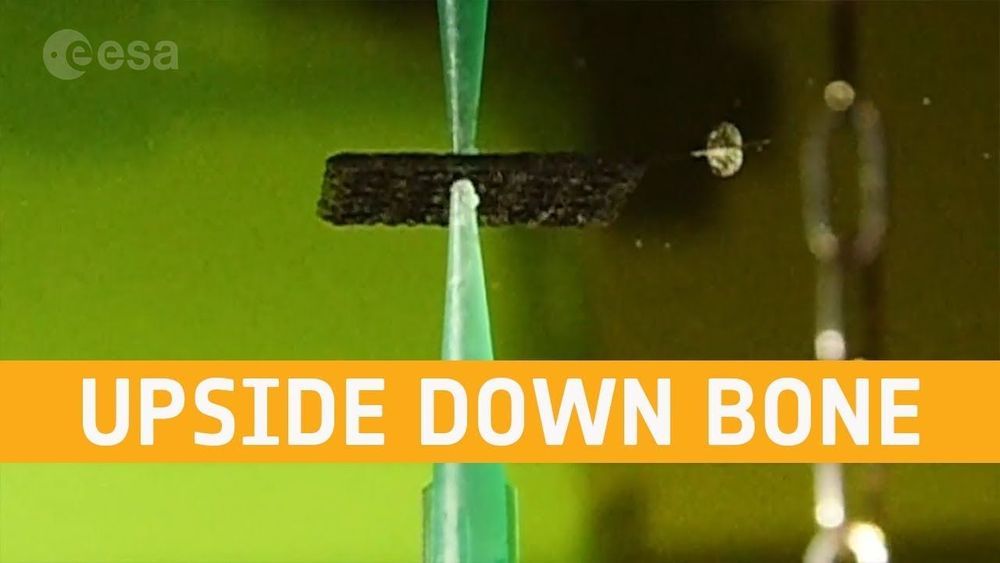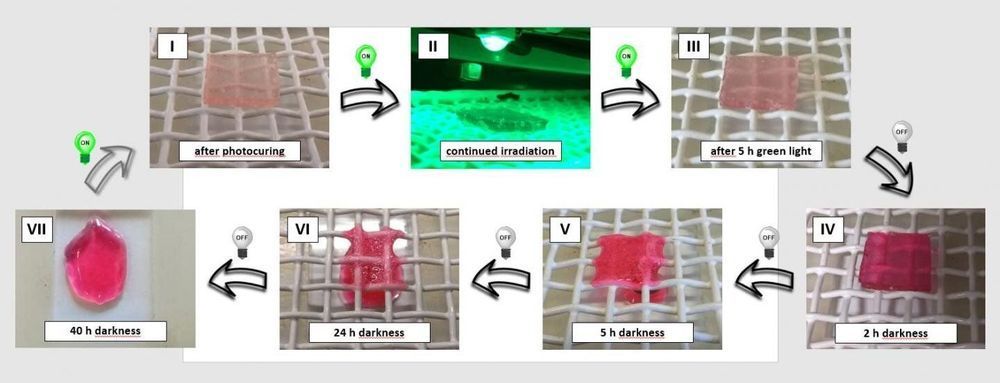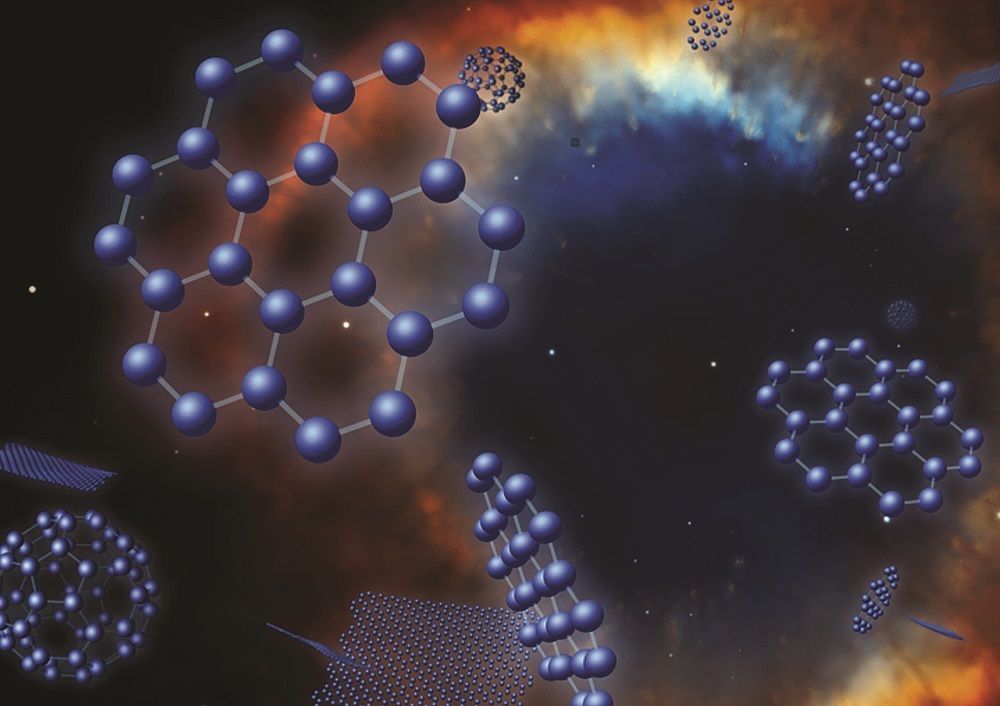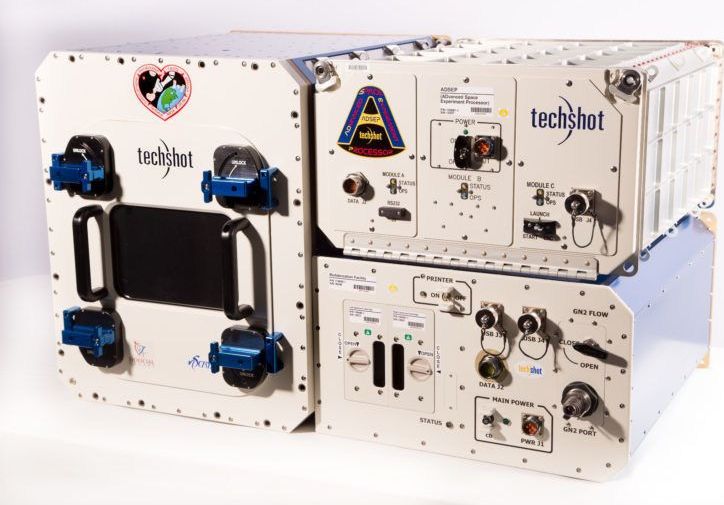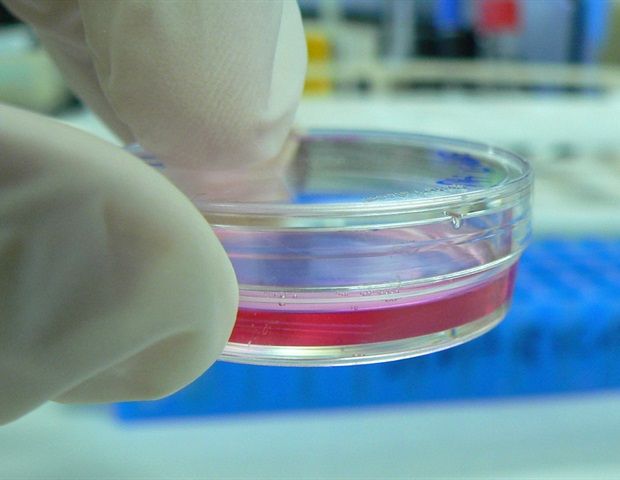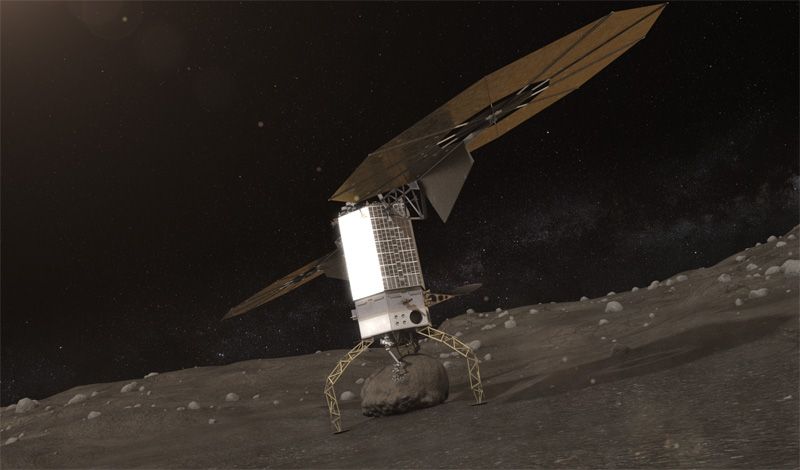Archive for the ‘3D printing’ category: Page 61
Jul 15, 2019
Green light for a new generation of dynamic materials
Posted by Quinn Sena in categories: 3D printing, sustainability
Developing synthetic materials that are as dynamic as those found in nature, with reversibly changing properties and which could be used in manufacturing, recycling and other applications, is a strong focus for scientists.
In a world-first, researchers from Queensland University of Technology (QUT), Ghent University (UGent) and Karlsruhe Institute of Technology (KIT) have pioneered a novel, dynamic, reprogrammable material—by using green LED light and, remarkably, darkness as the switches to change the material’s polymer structure, and using only two inexpensive chemical compounds. One of these compounds, naphthalene, is well known as an ingredient in moth repellents.
The new dynamic material could potentially be used as a 3D printing ink to print temporary, easy-to-remove support scaffolds. This would overcome one of the current limitations of the 3D process to print free-hanging structures.
Jul 13, 2019
Does the world need a 3D-printed rocket?
Posted by Klaus Baldauf in categories: 3D printing, transportation
That’s all a way of saying that behind every successful launch is a tremendous amount of labor and a vast network of suppliers working in concert to assemble each vehicle. By streamlining the supply chain, Relativity hopes to sharply cut production time.
But this goal of printing Terran 1’s more than 100-foot-tall (30-meter) exterior and fuel tank comes with an additional challenge: creating printers that can accomplish the task. “Building a rocket company is hard, building a 3D-printing company is hard, and building both together at the same time is borderline nuts,” says Ellis, Relativity’s CEO. “But while it’s the hardest part of the job, it is also the secret sauce that will make Relativity a world-changing company.”
There’s still a way to go before doing any world changing, though. “We’re not going to fly a rocket unless we get these metal 3D-printing technologies developed,” Ellis admits. “So that provides quite a bit of existential kick in the butt to figure it out, because this is the only way we ’ re going to actually make it to our goal.”
Jul 12, 2019
Neurosurgeons successfully implant 3D printed skull
Posted by Paul Battista in categories: 3D printing, biotech/medical
A 22-year-old woman from the Netherlands who suffers from a chronic bone disorder — which has increased the thickness of her skull from 1.5cm to 5cm, causing reduced eyesight and severe headaches — has had the top section of her skull removed and replaced with a 3D printed implant.
The operation was performed by a team of neurosurgeons at the University Medical Centre Utrecht and the university claims this is this first instance of a successful 3D printed cranium that has not been rejected by the patient.
Jul 11, 2019
Op-ed | Graphene goes galactic
Posted by Genevieve Klien in categories: 3D printing, habitats, solar power, space travel, sustainability
This op-ed originally appeared in the June 10, 2019 issue of SpaceNews magazine.
If humanity is to ever settle new planets, we will need radically new technologies; this much is obvious. But we may already have the perfect material to step up and fill the role: graphene. It is easily transported, easily manipulated, and an abundance of carbon in the galaxy could bode well for graphene, which is a carbon-based material. Its strength and versatility could well become a crucial component in colonization. For instance, spacecraft filled with advanced, massive 3D printers could ferry intrepid settlers to new corners of the galaxy, supplying a near-endless supply of material and equipment, perhaps even being used to construct homes that can withstand the conditions of other worlds.
Graphene’s discovery in 2004 sparked the flame of endless possibility within the science and technology communities due to its astounding properties. Only a single atomic layer thick and constructed in a lattice, honeycomb-like formation, graphene is nearly 200 times stronger than steel and better at conducting electricity and heat than any other conductor. It’s flexible, allows 97 percent of white light to pass through it (making it perfect for solar energy), and the list of properties continues.
Jul 9, 2019
A 3D-printed heart with blood vessels has been made using human tissue
Posted by Paul Battista in categories: 3D printing, biotech/medical
The rabbit-sized heart was made from a patient’s own cells and tissues, using techniques that could help to increase the rate of successful heart transplants in future.
How it worked: A biopsy of tissue was taken from patients, and then its materials were separated. Some molecules, including collagen and glycoproteins, were processed into a hydrogel, which became the printing “ink.” Once the hydrogel was mixed with stem cells from the tissue, the researchers from Tel Aviv University were able to create a patient-specific heart that included blood vessels. The idea is that such a heart would be less likely to be rejected when transplanted. The study was published in the journal Advanced Science.
Let it flow: Until now, researchers have only been able to print simple tissues lacking blood vessels, according to the Jerusalem Post.
Jul 6, 2019
A BFF in Space! Bioprinter Will 3D-Print Human Tissue on the Space Station
Posted by Paul Gonçalves in categories: 3D printing, bioprinting, space
Jul 5, 2019
Researchers develop promising reconstruction method based on 3D-printed esophageal grafts
Posted by Paul Gonçalves in categories: 3D printing, biotech/medical
The loss of complete segments of the esophagus often results from treatments for esophageal cancer or congenital abnormalities, and current methods to re-establish continuity are inadequate. Now, working with a rat model, researchers have developed a promising reconstruction method based on the use of 3D-printed esophageal grafts. Their work is published in Tissue Engineering, a peer-reviewed journal from Mary Ann Liebert, Inc., publishers.
Eun-Jae Chung, MD, PhD, Seoul National University Hospital, Korea, Jung-Woog Shin, PhD, Inje University, Korea, and colleagues present their research in an article titled “Tissue-Engineered Esophagus via Bioreactor Cultivation for Circumferential Esophageal Reconstruction”. The authors created a two-layered tubular scaffold with an electrospun nanofiber inner layer and 3D-printed strands in the outer layer. After seeding human mesenchymal stem cells on the inner layer, constructs were cultured in a bioreactor, and a new surgical technique was used for implantation, including the placement of a thyroid gland flap over the scaffold. Efficacy was compared with omentum-cultured scaffolding technology, and successful implantation and esophageal reconstruction were achieved based on several metrics.
Dr. Chung and colleagues from Korea present an exciting approach for esophageal repair using a combined 3D printing and bioreactor cultivation strategy. Critically, their work shows integration of the engineered esophageal tissue with host tissue, indicating a clinically viable strategy for circumferential esophageal reconstruction.”
Jul 3, 2019
Asteroid mining market to be worth $3.9bn by 2025
Posted by Klaus Baldauf in categories: 3D printing, space
Ongoing and future space missions, rising investment in new mining technologies, and the use of materials obtained from asteroids in 3D printing will drive the growth of the asteroid mining market, according to Allied Market Research.
Jul 1, 2019
Futureseek Daily Link Review; 02 July 2019
Posted by Paul Battista in categories: 3D printing, robotics/AI, space
 * Scientists Took an M.R.I. Scan of an Atom * Former NASA Flight Director Gene Kranz Restores Mission Control In Houston * Jeff Hawkins: Thousand Brains Theory of Intelligence
* Scientists Took an M.R.I. Scan of an Atom * Former NASA Flight Director Gene Kranz Restores Mission Control In Houston * Jeff Hawkins: Thousand Brains Theory of Intelligence
* Google’s robots.txt Parser is Now Open Source * Dear Agile, I’m Tired of Pretending * 4 Ways to Debug your Deep Neural Network
* How 3D printing allows scientists to grow new human hairs * NASA is testing how its new deep-space crew capsule handles a rocket emergency * Fake noise will be added to new electric cars starting today in the EU .
